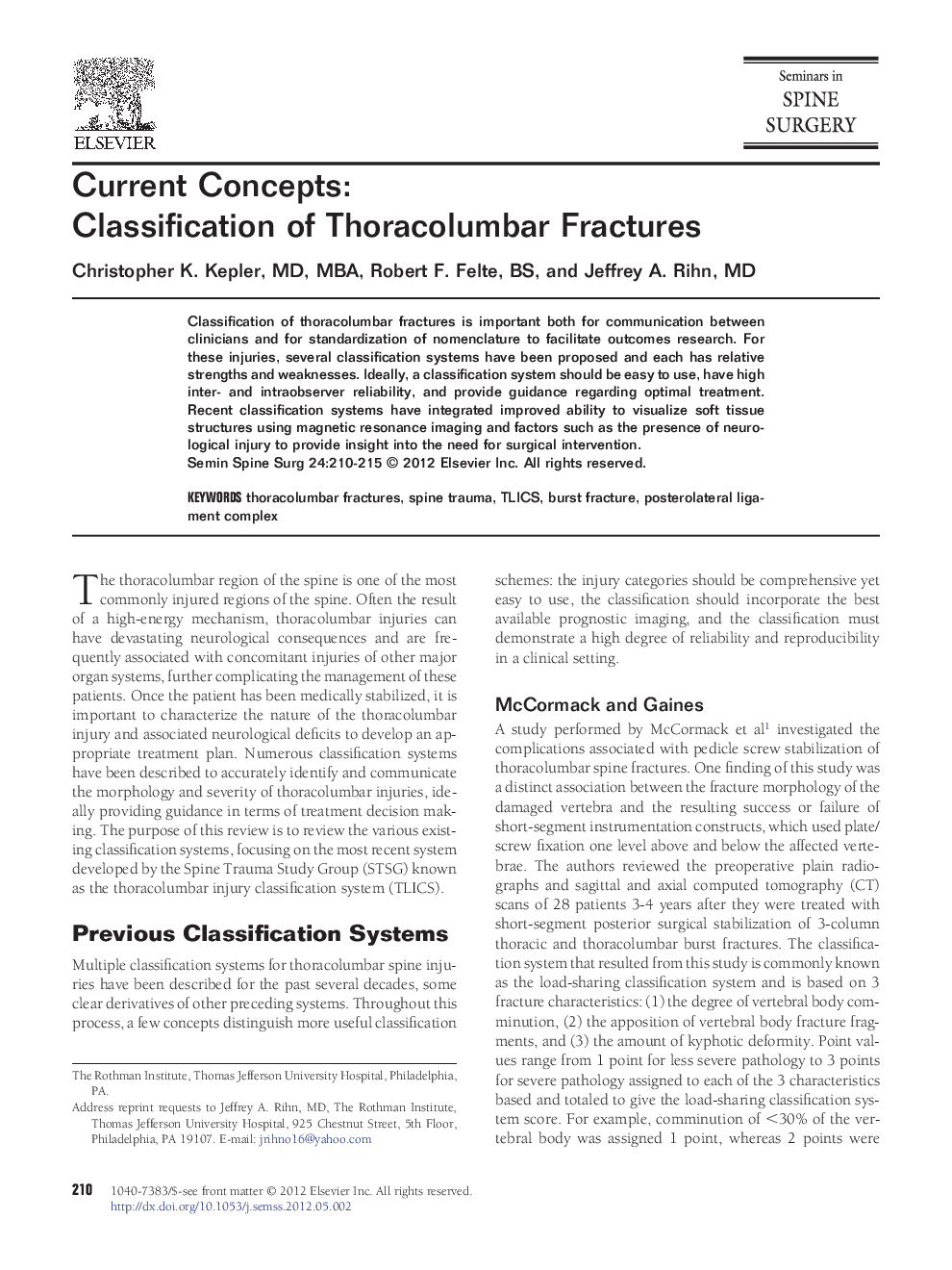| Article ID | Journal | Published Year | Pages | File Type |
|---|---|---|---|---|
| 4094680 | Seminars in Spine Surgery | 2012 | 6 Pages |
Abstract
Classification of thoracolumbar fractures is important both for communication between clinicians and for standardization of nomenclature to facilitate outcomes research. For these injuries, several classification systems have been proposed and each has relative strengths and weaknesses. Ideally, a classification system should be easy to use, have high inter- and intraobserver reliability, and provide guidance regarding optimal treatment. Recent classification systems have integrated improved ability to visualize soft tissue structures using magnetic resonance imaging and factors such as the presence of neurological injury to provide insight into the need for surgical intervention.
Related Topics
Health Sciences
Medicine and Dentistry
Orthopedics, Sports Medicine and Rehabilitation
Authors
Christopher K. Kepler, Robert F. Felte, Jeffrey A. Rihn,
